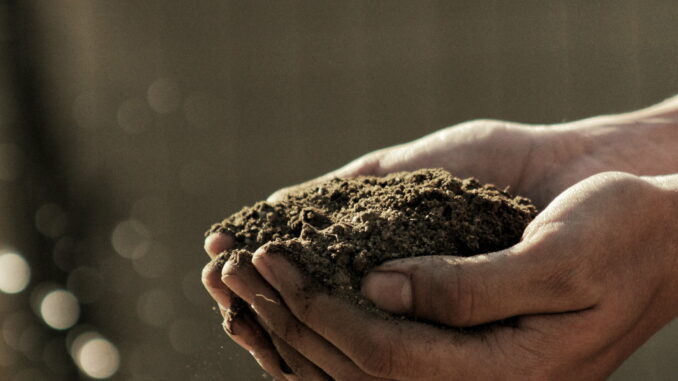
by Laurel Thompson | Fort Collins Nursery
It’s time to start prepping gardens and raised beds for spring planting, but with so many different topsoils, composts, minerals, and other ingredients to choose from, it can be difficult to determine the right soil recipe for your garden. When in doubt, go back to the basics with these simple soil building techniques.
IN-GROUND GARDENS
Colorado soil is naturally alkaline and often full of dense clay, which requires some amending — but not necessarily a complete overhaul — for successful plant growth. Seasoned gardeners know that good ground soil also doesn’t appear overnight and that adding fresh organic matter to your garden every year will result in more loose, fertile, nutrient-balanced soil over time.
If this is your first year working with an in-ground vegetable garden, start by breaking up the top 12 inches of soil with a shovel until large clumps reduce to small chunks. Clear out most of the clay and replace it with high-quality topsoil, then spread a couple of inches of well-aged compost on top and mix it all together.
Gardeners who use a “no-till” technique should skip the mixing and lay the fresh organic matter on top of last year’s soil at least a month before planting (ideally this should be done the previous fall). This gives your compost a chance to “cool” and feed your garden’s ecosystem without disturbing the soil structure and nutrient cycle within it.
Topsoils and composts can be found at your local nursery or landscape supply company, and some even provide topsoil with compost already mixed in. Good topsoil is dark in color, smells earthy, and shouldn’t contain too much clay, rock, or sand. High-quality, organic composts should be well-aged with all food and plant parts broken down into a fine, soil-like matter.
RAISED BEDS
Unlike in-ground gardens that can have a dense clay soil base, raised beds allow you to create your own soil recipe from scratch. Don’t get carried away by adding too many amendments, however, as many of these ingredients aren’t necessary and can be quite expensive. When it comes to raised bed gardening, less really is more.
The soil makeup of your raised beds should contain two parts of high-quality topsoil and one part of well-aged compost, though additional “dressings” may be needed. Additional dressings can include everything from aged cow and chicken manure to worm castings, finely ground mulch, expanded shale, soil microbes, and decomposed leaves from last fall. Products like Happy Frog® Soil Conditioner and Soil Mender Raised Bed Mix contain a lot of these amendments, so you don’t have to purchase them all separately.
Once you have all your ingredients, stir them together and fill your raised beds, leaving a few inches between the soil surface and rim. If you grow plants in your raised beds every year, all you need to do is sprinkle a couple of inches of compost on top of the old soil and give it time to “cool” before planting in mid-May.
Whether your garden is in a raised bed or in-ground, soil testing is the best way to learn what the state of your soil is prior to making any modifications. Test kits for the Colorado State University Soils Lab are available at most local garden centers. Your local garden center can help interpret the results and recommend actions so you achieve the right nutrient content and pH level for your plants.
Good soil takes years to build and there’s no single correct way to build healthy soil, so no matter what your approach is, the work you do today will benefit your garden for years to come!
Support Northern Colorado Journalism
Show your support for North Forty News by helping us produce more content. It's a kind and simple gesture that will help us continue to bring more content to you.
BONUS - Donors get a link in their receipt to sign up for our once-per-week instant text messaging alert. Get your e-copy of North Forty News the moment it is released!
Click to Donate
